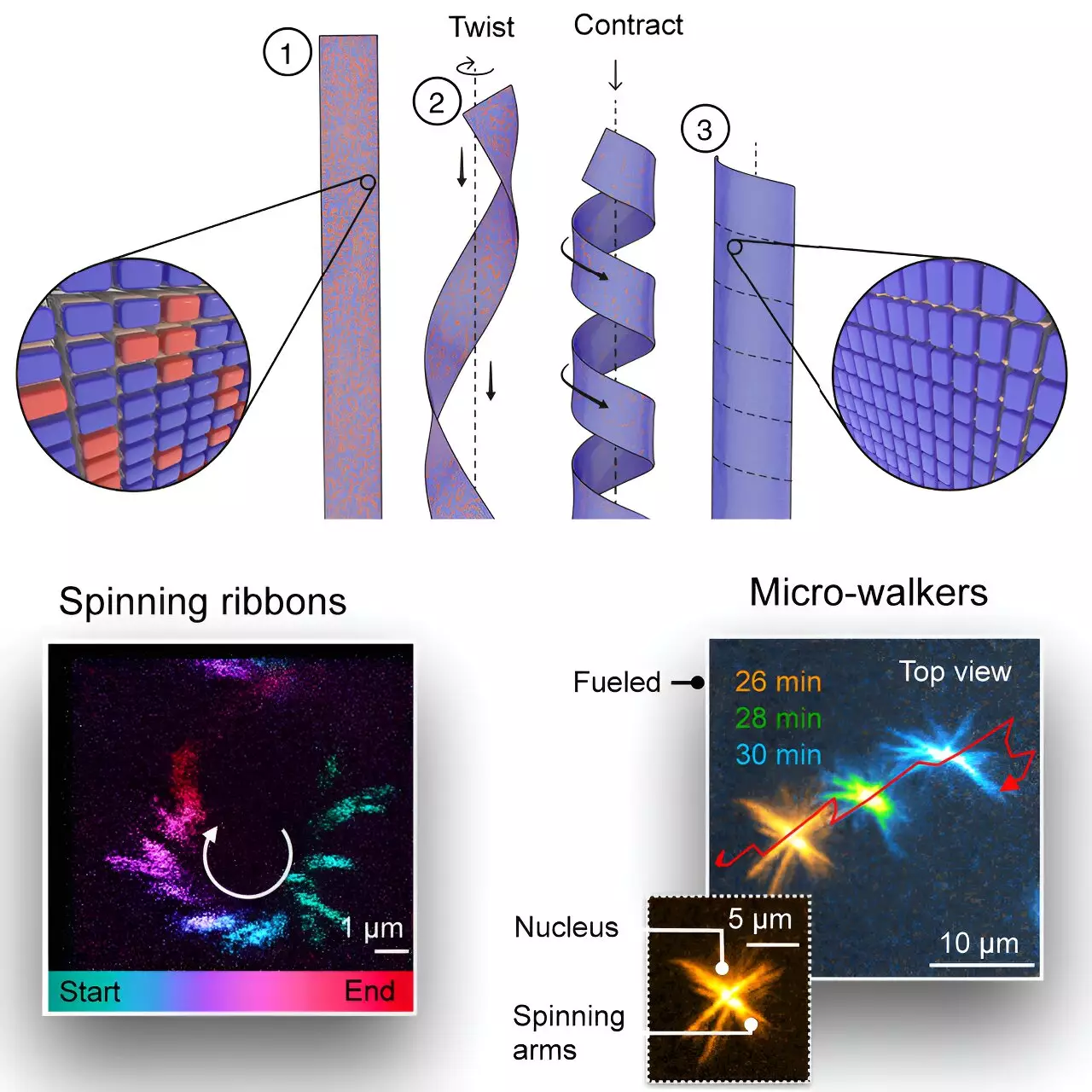A team of researchers at the Technical University of Munich (TUM) has achieved a significant milestone in molecular engineering by creating an artificial motor based on supramolecular structures. This novel device showcases remarkable power generation capabilities by utilizing a chemical fuel, establishing a parallel to biological systems in nature. The implications of this leap in technology could redefine the application of robotics at the nanometer scale.
At the heart of this innovation is a slender ribbon composed of meticulously arranged molecules. This ribbon acts like a miniature motor; when energized by a chemical fuel, it self-organizes, transforming its shape and initiating movement akin to a small fin. The advancement here is twofold: firstly, it represents the first instance of translating chemical energy into rotational energy at a supramolecular level; secondly, it draws inspiration from biological entities, such as archaea that utilize ATP for locomotion via flagella.
The design simulates primitive biological motion, yet delivers this mechanism through synthetic means. It resembles a conceptual leap where biochemistry converges with engineering, unlocking potent applications for nanotechnology.
The research, spearheaded by Brigitte and Christine Kriebisch alongside Job Boekhoven, is especially notable for its emphasis on control. By manipulating the amount of chemical fuel, the researchers can finely tune the rotation speed of the ribbons. Additionally, the inherent molecular structure enables control over the rotation’s direction, offering unprecedented versatility.
This capability has been verified through advanced optical measurement techniques with contributions from Professor Matthias Rief, who aids in determining the force exerted by the rotating motor on surrounding particles. Significantly, the ribbons possess the strength to propel micrometer-sized objects, indicating a practical application of the technology in manipulating small-scale systems.
One of the most exciting prospects of this advancement is the potential for developing “micro-walkers” from multiple rotating ribbons. These minuscule devices could theoretically traverse various surfaces, opening discussions around their functionality in various fields, particularly in medicine.
Current limitations exist regarding the chemical fuel utilized, which may present toxicity risks if applied within living organisms. However, with ongoing research and refinement, the vision is to adapt these systems for medical applications—such as targeted drug delivery mechanisms that navigate through blood vessels to interact directly with tumor cells.
The TUM team has set the stage for a transformative era in supramolecular robotics. As research evolves, the door opens wider to harnessing the power of tiny motors that operate under the principles of nanotechnology, marrying synthetic processes with biological efficiency. While challenges remain, particularly concerning the safety of the chemical fuels involved, the potential applications of these microscopic engines could revolutionize medical treatments and countless other fields in the near future. The journey ahead is filled with possibilities, and the implications of their work promise to be significant in reshaping nanotechnology’s landscape.

